With a rich cultural and artistic heritage that dates back centuries and its status as an education, aerospace, commerce, technology, culture, music, poetry, and tourism center, it’s no surprise that the things to see and eat in Lucknow, India, are as varied as they come.

This large capital city nestled in the heart of the north-central state of Uttar Pradesh is a multicultural metropolis that boasts over 2.8 million residents. Sometimes referred to as the City of Nawabs because of the city’s history as the seat of power for the honorific title in the 18th and 19th centuries, Lucknow is a part of the Uttar Pradesh Heritage Arc along with the cities of Agra and Varanasi.
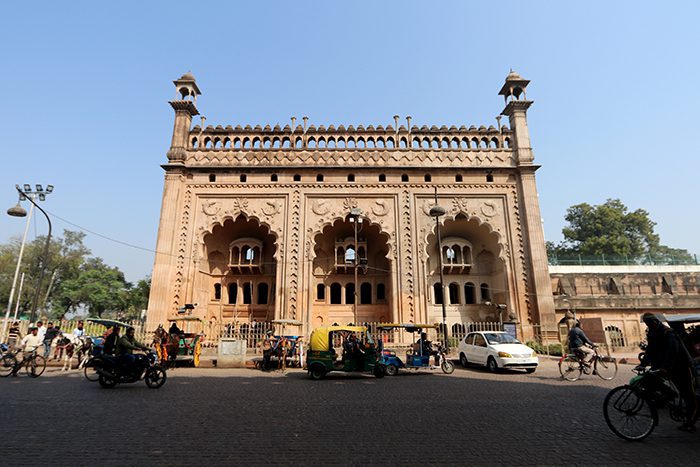
I visited Lucknow during my first trip to India in February of 2018. I spent most of my time in the city recovering from a week-long stomach infection that caused me to lose quite a bit of weight, so while I couldn’t eat much, I doubled down on touring the city’s gorgeous cultural and historical sites and I was not disappointed one bit. These are the things you need to see and eat in Lucknow, India!
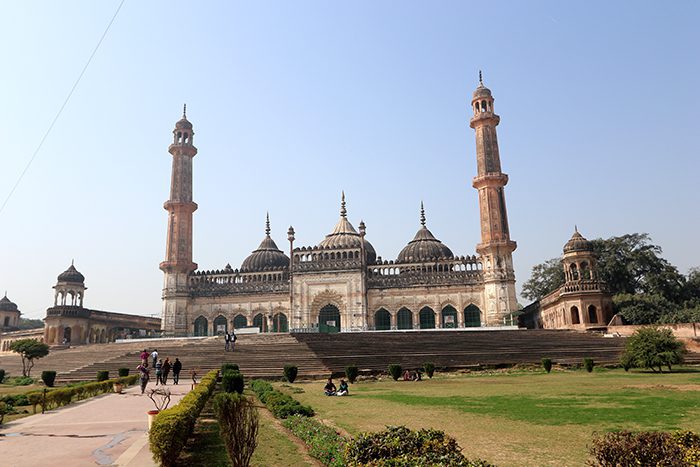
One of Lucknow’s most prominent cultural and historical sites is Bara Imambara, a mosque complex that was built between 1785 and 1791 by Asaf-ud-Daula, the Nawab of Awadh. The Bara Imambara complex was built in the Mughal architectural style that was made world-famous by Agra’s Taj Mahal.
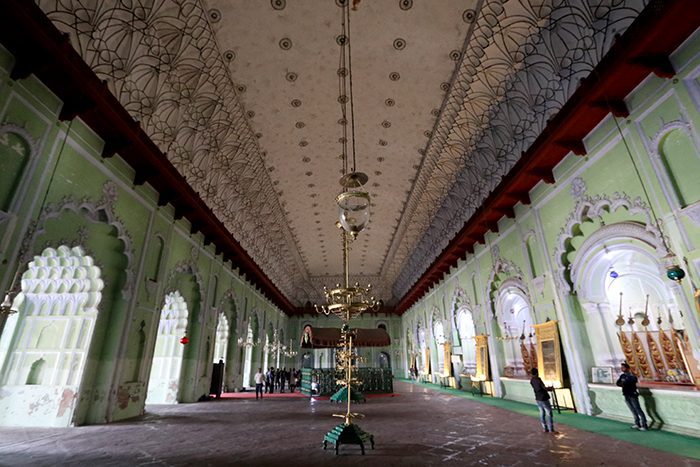
According to legend, there are over a thousand ways to reach the complex’s terrace, but only one way to come back. Other legends claim that blocked passageways in the complex lead to a location under the Gomti River, as well as the cities of Faizabad, Allahabad, Delhi, and Agra, but those rumors have yet to be confirmed.
Check out Top 10 Things to See and Do in Delhi, India
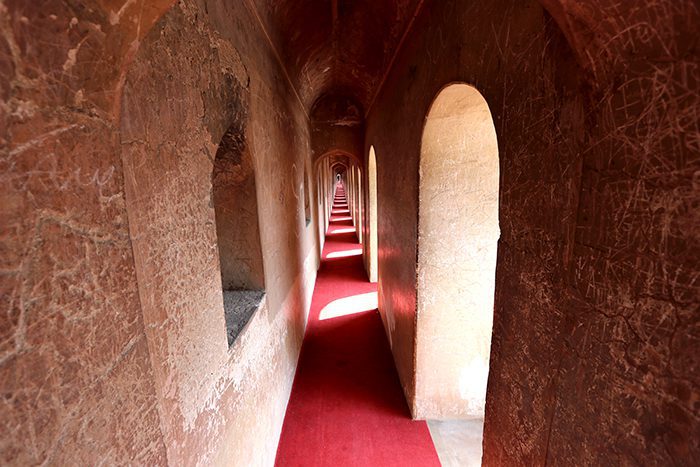
Inside, you’ll find the grave of Asaf-ud-Daula, a replica of the tomb of Mohammed in Mecca, the graves of both the emperor and architect, colorful chandeliers that were gifted by other countries, and no support pillars whatsoever. The complex’s labyrinth is a dark, cold, and winding series of interconnected passageways that were built as a ventilation system.

The labyrinth leads to many places, including the massive main hall, which is constructed in such a way that you can hear someone perfectly, even if they’re calling out to you from the opposite side. You can also take the winding, narrow passageways to the complex’s rooftop, which offers the best views in Lucknow and a fantastic spot for photo opportunities!
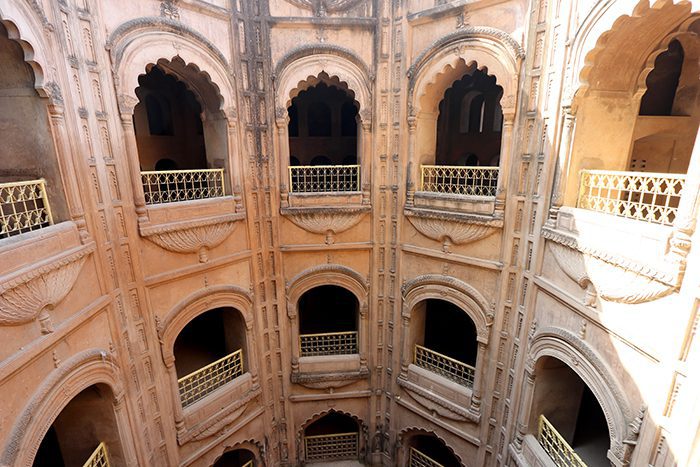
The site’s stunning bouli is a 200-foot-deep stepwell that was used as a rainwater collection system. I recommend visiting Lucknow during the dry season so you can visit this site; it’s not accessible during the rainy season.
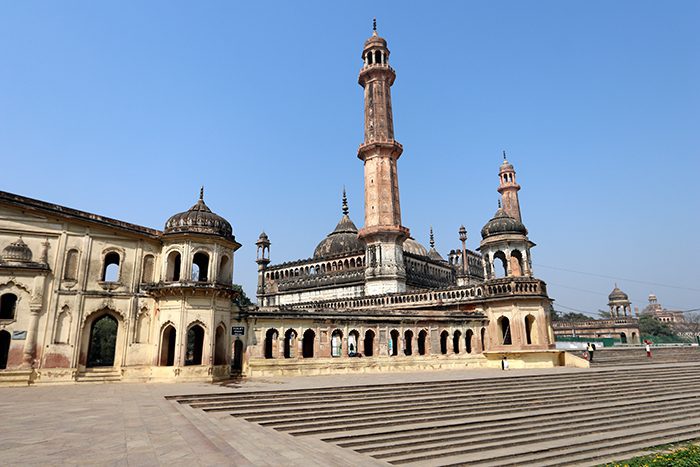
Hiring an English-speaking guide to show you around this gorgeous complex for 300 rupees is highly recommended. They’ll take you on a fun and educational tour and ensure that you don’t get lost in the labyrinth. Just remember to take your shoes off before you go inside!

Located between Bara Imambara and Chota Imambara is a massive and imposing landmark called the Rumi Darwaza, which was built in 1784 by Nawab Asaf-ud-Daula as a way to create more jobs during a severe famine that had rocked northern India. This sixty-foot-tall and intricately carved example of Awadhi architecture has become the iconic symbol of Lucknow in recent years.

The gate was constructed from bricks covered in lime to allow the landmark to be carved in such a detailed and ornate way; it would have been impossible to carve stone in the same manner.

Unfortunately, the very bricks that allowed such gorgeous and detailed carving may be contributing to the landmark’s slow decay, as brick structures don’t last nearly as long as those made of stone do. Adding to the decay are the years of vibrations from the thousands of automobiles that pass beneath it on a daily basis. But for now, the Rumi Darwaza is one of Lucknow’s most prominent structures and is free to visit, so be sure to see it in all its grandeur as soon as possible!
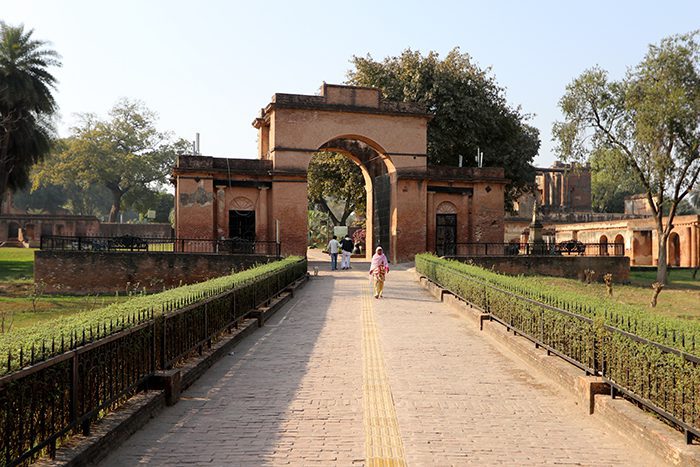
Located in the heart of Lucknow is another of the city’s fascinating historical sites, the British Residency, which was the home of the British Resident General representative on the Court of the Nawab. This complex of buildings was built between 1780 and 1800 and played a large role in the Indian Rebellion of 1857, as it was the subject of the Siege of Lucknow between July and November of that year.
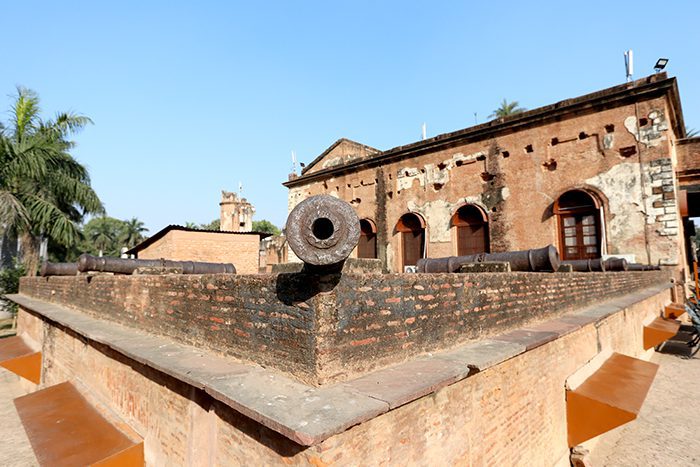
The residency itself lies in ruin today, and is a popular tourist attraction and protected monument by the Archaeological Survey of India. On the grounds, you’ll also find museum; government offices; buildings scarred by cannon fire; the tomb of Sadat Ali Khan, the first Nawab of Awadh; a banquet hall; the ruined St. Mary’s Church and Cemetery; and much more.
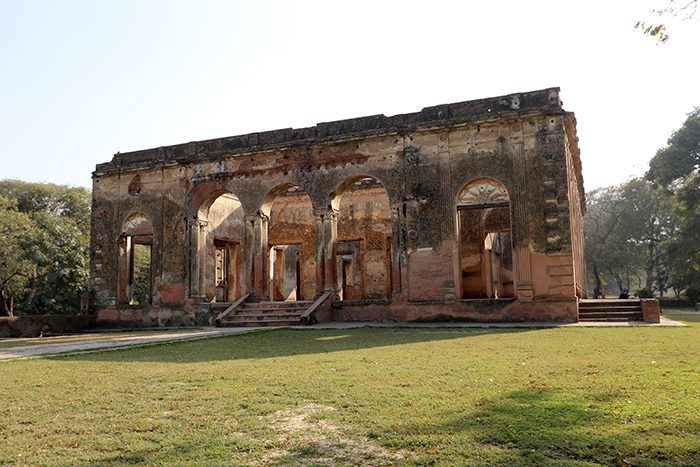
While it only costs 15 rupees for locals to visit, foreigners must pay 200, and there is a 25-rupee fee if you plan on filming there. Touring the British Residency is a must for any history enthusiast visiting Lucknow!
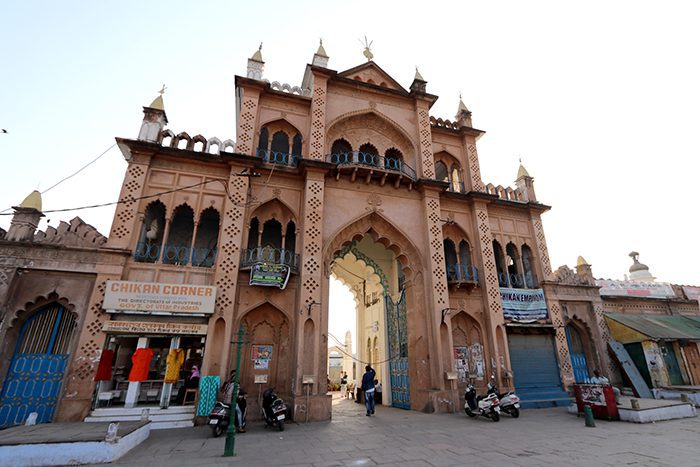
Not far from Bara Imambara is another sacred hall called Chota Imambara, also known as Imambara Hussainabad Mubarak. This large monument was built in 1838 by Muhammad Ali Shah, the Nawab of Awadh, to serve as a mausoleum for him and his mother.
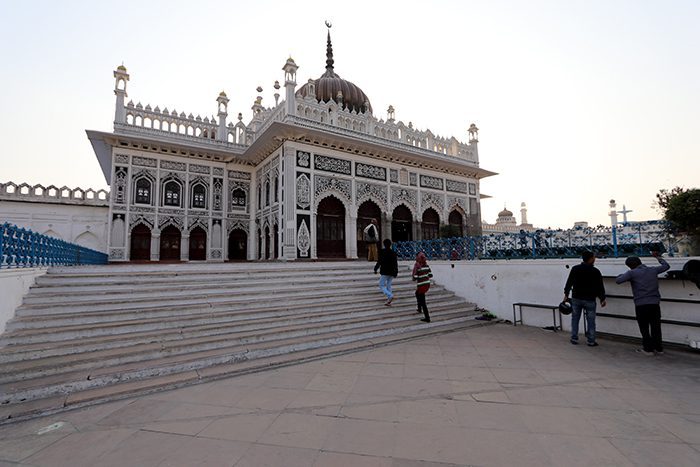
Inside are two halls and a platform where a replica of the structure kept on Imam Husain’s grave in Iraq is displayed. The green-and-white Hall of Azakhana is filled with chandeliers and crystal lampstands, which earned Chota Imambara the nickname The Palace of Lights.
Check out 5 Things to See and Do in Agra, India

On the grounds of the complex are the tomb of Princess Zinat Asiya, which was built to be a small-scale replica of the Taj Mahal; a treasury that was built opposite the tomb to maintain the complex’s symmetry; the Husainabad Mosque; an incomplete watch tower called Satkhanda; and a ceremonial gateway known as Naubat Khana. While I was there, I visited Muhammad Ali Shah’s bathroom, where you can see his bathtub and shower, as well as another tub that used to contain rosewater.
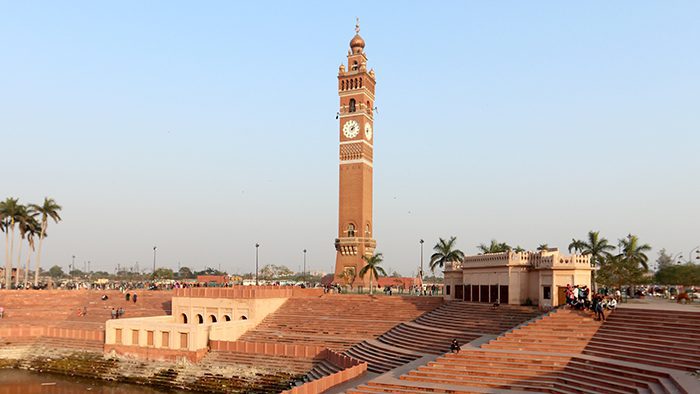
Located near the imposing and beautiful Rumi Darwaza gateway is the Hussainabad Clock Tower, which was built with Victorian and Gothic influences in 1881 by Nawab Nasir-ud-Din Haider as a way to mark the arrival of the 1st Lieutenant Governor of the United Province of Avadh, Sir George Couper.

The tower’s clock parts were made using gunmetal and the dial was built to resemble a twelve-petaled flower with bells around the edge. The Hussainabad Clock Tower also features a 14-foot-long pendulum, and at 67 meters high, it is the tallest clock tower in India and can be seen from just about anywhere in the city.
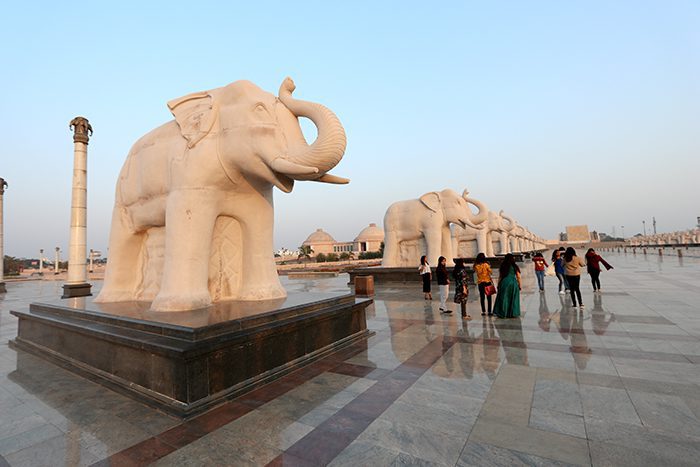
In the Gomti Nagar area of Lucknow, you will find Ambedkar Memorial Park, a public park and memorial that is formally known as Dr. Bhimrao Ambedkar Samajik Parivartan Prateek Sthal and honors the lives of Indian activists including Bhimrao Ambedkar, Narayana Guru, Jyotirao Phule, Kanshi Ram, Birsa Munda, and Shahuji Maharaj, who dedicated their lives to humanity, equality, and social justice.

The 107-acre park consists of several smaller sites, including the Sangrahalay Museum, a gallery containing murals made of bronze, sixty-two magnificent elephant statues that guard the memorial’s entrance, and the Ambedkar Stupa, which features a bronze statue of Dr. Bhimrao Ambedkar in its sanctum sanctorum.
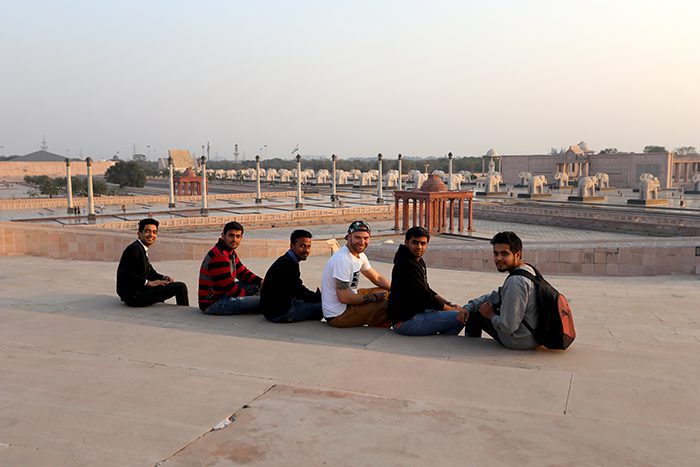
During my trip to Lucknow in February, I explored this beautiful park with an amazing group of Instagram followers and it is truly a sight to behold that should not be missed!
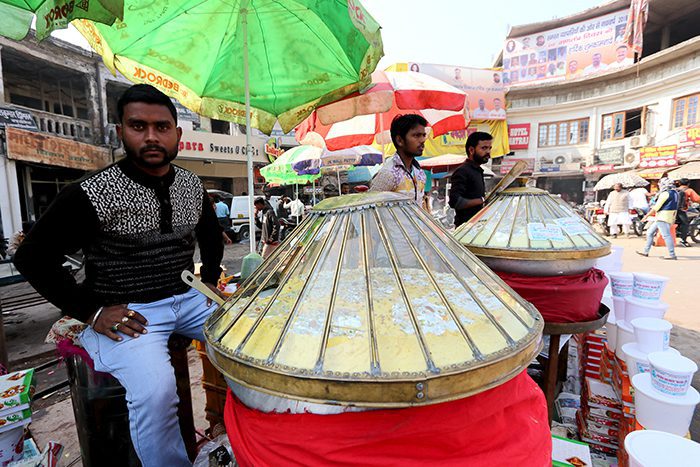
If you find yourself in Lucknow (or even Delhi, Kanpur, Varanasi, and other parts of Uttar Pradesh) during the winter months, you’re sure to find food vendors serving a curious dish that looks like a thick, fluffy whipping cream topped with almonds and pistachios along the side of the road.
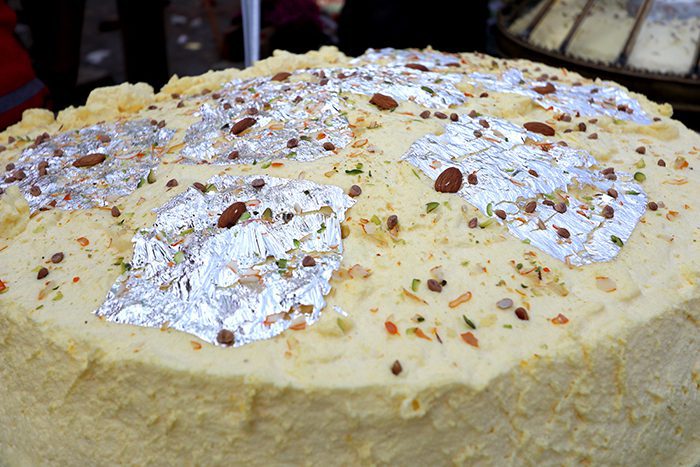
This dish, called Makkhan Malai (also spelled Makhan Malai) is a popular sweet made from milk cream that is popular in North India during the cooler months of the year.
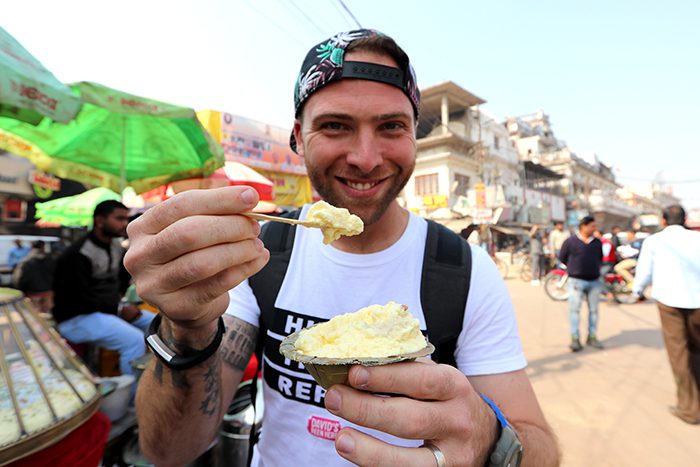
After my stomach recovered from my illness, this was one of the first street foods I tried in over a week. It’s like yogurt and cream that has been mixed, sits for five hours, and is beaten together until it becomes a fluffy, sweet, milky treat. It’s delicious and definitely one of the best things to see and eat in Lucknow!

If you’re looking to do some shopping during your time in Lucknow, look no further than Aminabad Market, a large bazaar located in the center of the city that has been a popular business center for merchants, artists, craftsmen, and traders since the time of the Nawabs in the 18th century.

The market is famous for its chikan embroidered kurtas and saris, which are made from chicken fleece and feathers. Carpets, bedding, silk and muslin products, ornaments, jewelry, fancy dresses, menswear, footwear, and books can also be found in the market.
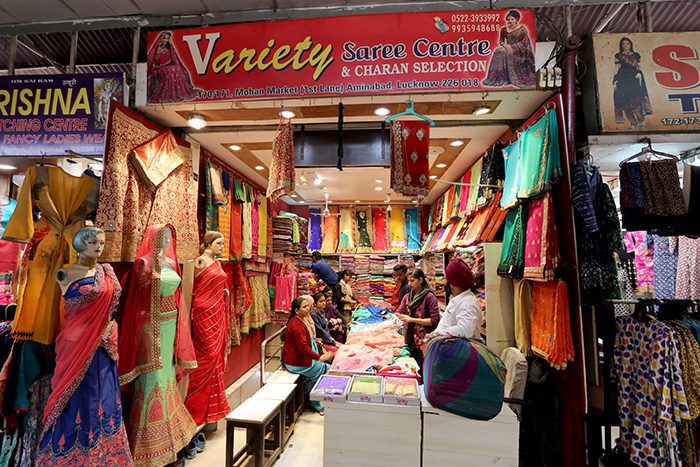
Eateries including non-vegetarian restaurants like Tunday Kababi, as well as sweet shops, bakeries, and paan shops, can also be found in the bazaar area. You can even get a haircut from a local barber like I did!
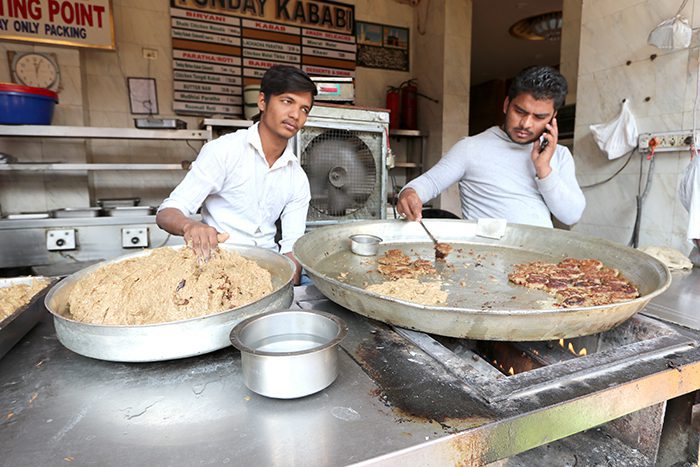
Any foodie visiting Lucknow would be remiss to skip Tunde ke Kabab, a non-vegetarian Awadhi dish that is extremely popular in the city. The dish is made of minced buffalo meat, yogurt, a clarified butter called ghee, onions, vinegar, and lime along with up to 160 spices including ginger, garlic, mint, cardamom, cloves, and garam masala.
Check out 5 Things to Do in Varanasi, India

One of the best places in the city to try this phenomenal meat dish is Tunday Kababi, a famous restaurant that has been open since 1905, which can be found in the Chowk area in Old Lucknow. The dish is made up of extremely soft and flavorful meatballs that are served with parathas, raw onions, and lime wedges.
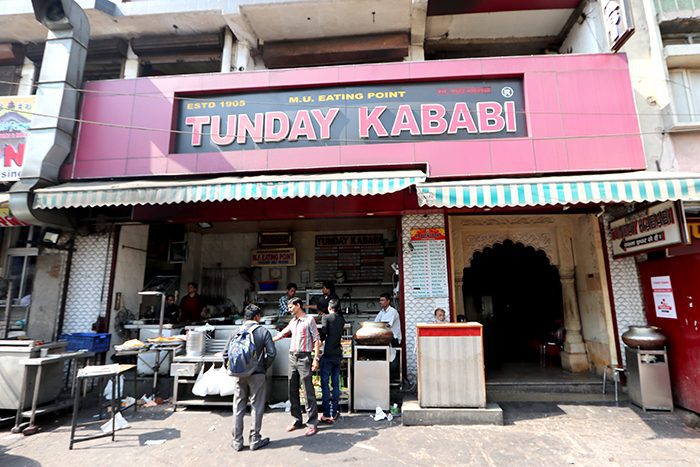
The texture of the buffalo meat is outstanding and the flavors are well-balanced. They’re some of the best meatballs I’ve ever had and I highly recommend them to anyone visiting Lucknow!

No visit to Lucknow is complete without trying Tandoori Chicken. This bright red chicken is arguably one of the most famous Indian dishes and is popular around the world. According to archaeologist and college professor Vasant Shinde, the origins of the dish date back to around 3000 B.C.
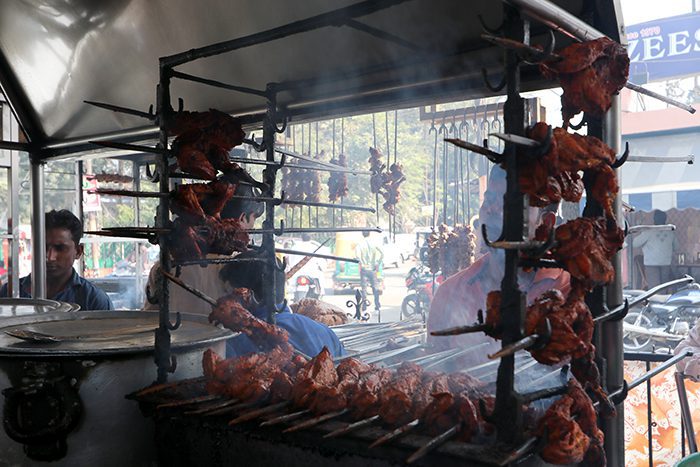
It is prepared by marinating raw, skinless chicken in yogurt and tandoori masala. Cayenne pepper, red chili powder, turmeric, and red food coloring are added to the chicken, which gives the dish its signature crimson appearance. It’s then cooked at a high temperature with wood or charcoal in a tandoor oven, which adds a delicious smoky flavor.

The tandoori chicken I tried at the Open Air Restaurant in Lucknow was light on spice, but still bursting with flavor. It was a tender, juicy roasted chicken, topped with a unique spice blend that had my taste buds going wild. It’s one of the best chicken dishes I’ve ever had and is, without a doubt, one of the top things to see and eat in Lucknow.
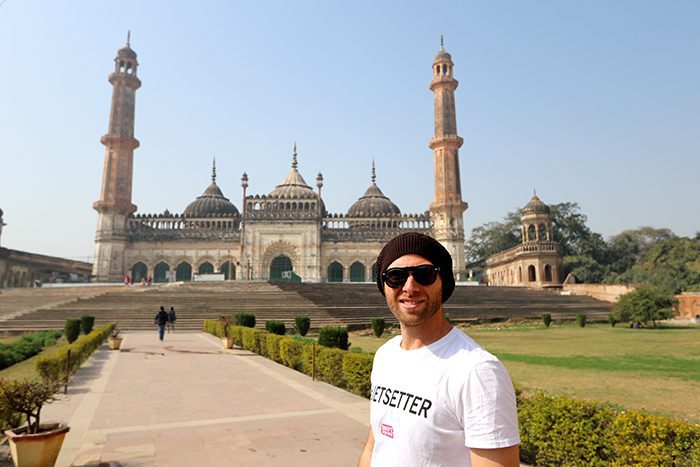
The metropolis of Lucknow is a true feast for the senses. This bright, colorful, and unique city, brimming with history, fantastic cuisine, charming locals, and new adventures at seemingly every turn, is heaven for any traveler exploring its bustling streets. Exploring this city was an experience I will never forget and I guarantee, you’ll never forget your time there, either.
Counter
101 Countries • 1432 Cities